What are Half-Hardy Annuals? A Beginner’s Guide to Vibrant Blossoms
Half-hardy annuals are your ticket to vibrant color in the garden without much fuss. These plants can survive cool temperatures but need protection from harsh frosts.
Half-hardy annuals will bring a burst of color to your garden throughout the summer. They are perfect for gardens, balconies, and patios.
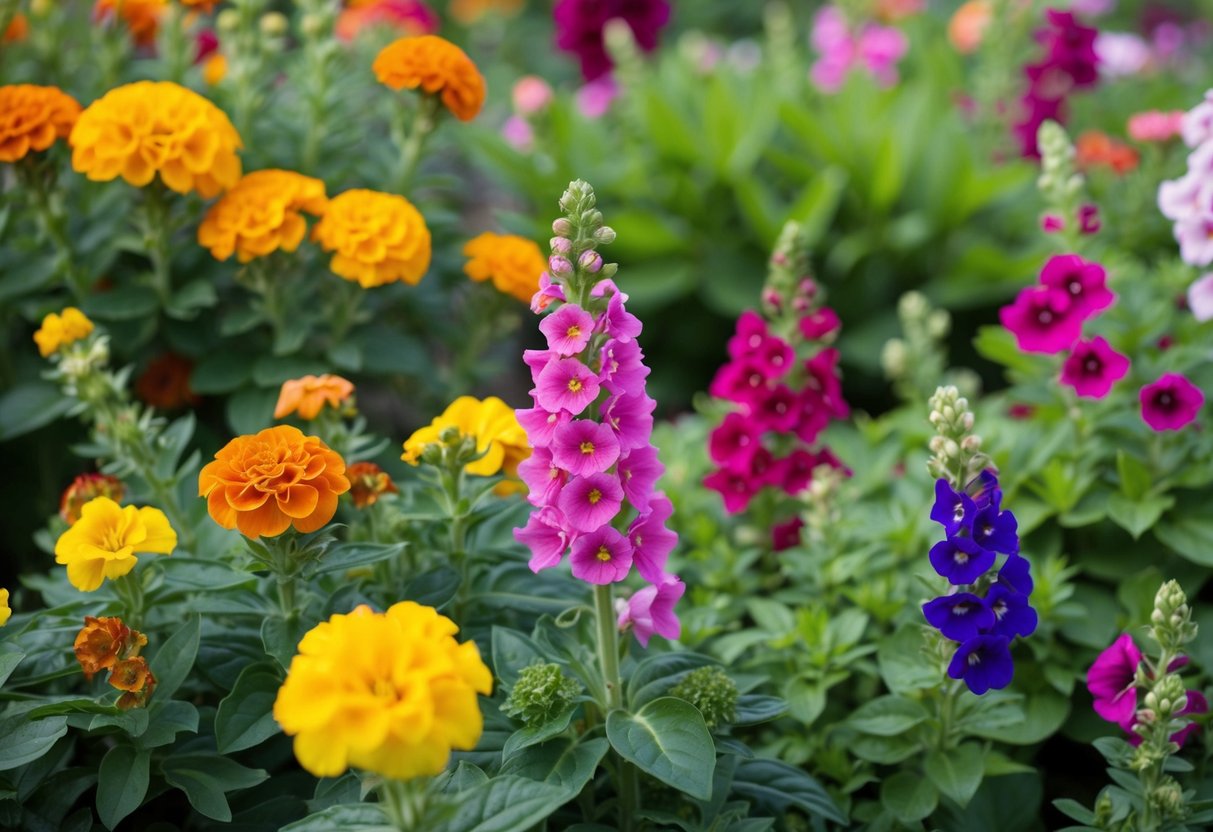
When planting, timing is key. These annuals thrive when sowed after the last frost has passed.
Imagine your space filled with the bright blooms of cosmos and zinnias, which are popular choices among gardeners. These plants not only add beauty but do so quickly, making them ideal if you’re looking for speedy color.
Using half-hardy annuals, you can easily create an impressive garden display. Whether you’re new to gardening or a seasoned enthusiast, these plants add character and charm. Visit this guide to discover more about incorporating these delightful blooms into your garden.
Understanding Half-Hardy Annuals
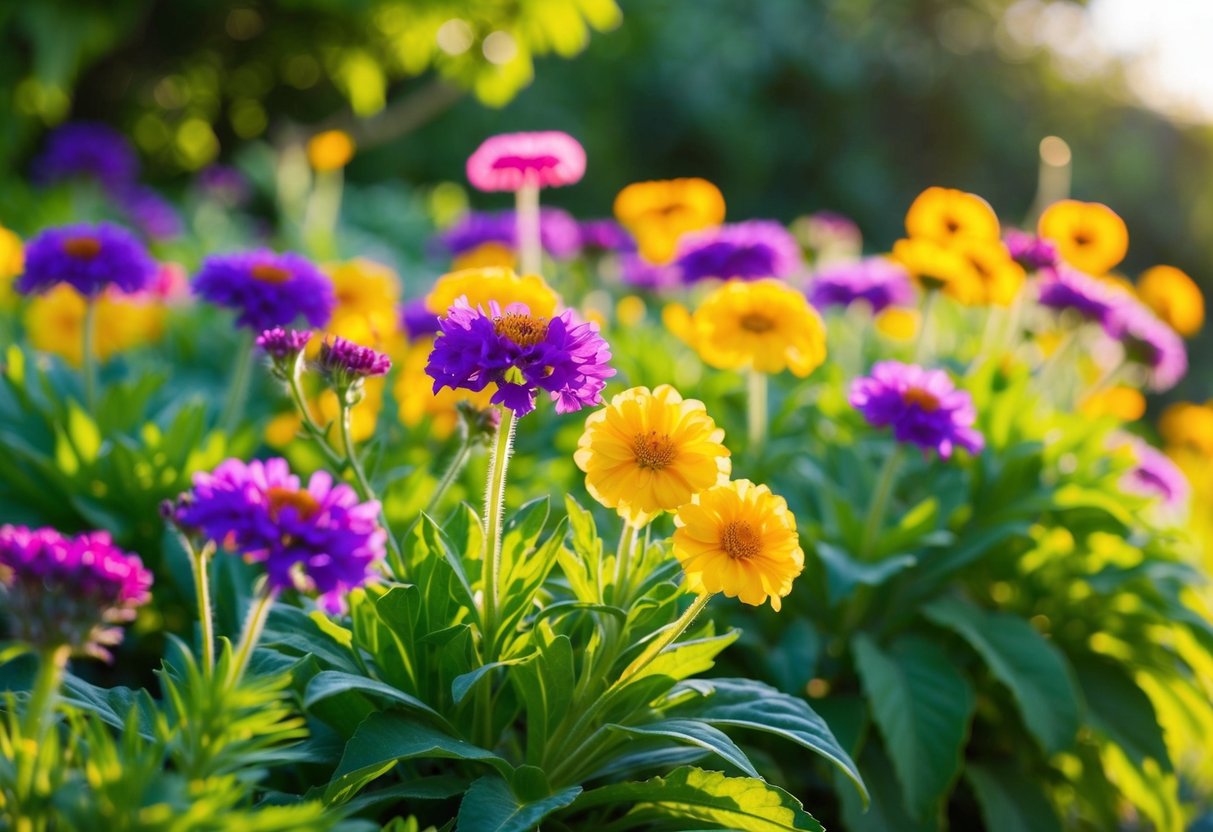
Half-hardy annuals are a fascinating group of plants that add vibrant color to gardens during the warmer months. They have unique characteristics that set them apart from hardy and tender annuals. Knowing these differences helps you plan your garden more effectively.
Definition and Characteristics
Half-hardy annuals are plants that can handle cool temperatures but not frost. They survive until the first frost hits, making them ideal for summer gardens.
You often need to start these annuals indoors, and they need a protected environment until the weather warms up enough for transplanting.
They thrive in outdoor spaces like gardens, patios, and balconies throughout the summer. With their colorful blooms and various forms, half-hardy annuals bring beauty and diversity to any landscape. Many gardeners prefer them for their extended blooming period from late spring to early fall. Examples include marigolds and zinnias, which flourish under favorable conditions.
Comparing Hardy, Half-Hardy, and Tender Annuals
To understand half-hardy annuals better, it’s useful to compare them with other types. Hardy annuals can withstand light frost and grow well in cooler weather. Examples include pansies and sweet peas, which can be sown directly outdoors even in early spring.
Half-hardy annuals, in contrast, need some protection from cold. They are not as resilient as hardy annuals but more robust than tender ones.
Tender annuals, like impatiens and begonias, require warm temperatures throughout their lifecycle as they are sensitive to cold and frost.
By knowing where each type thrives, you can select the right plants for your garden’s climate. This understanding ensures you’ll enjoy a garden full of color and health all season long. For more details, you can explore guides on half-hardy annuals.
Cultivation and Care
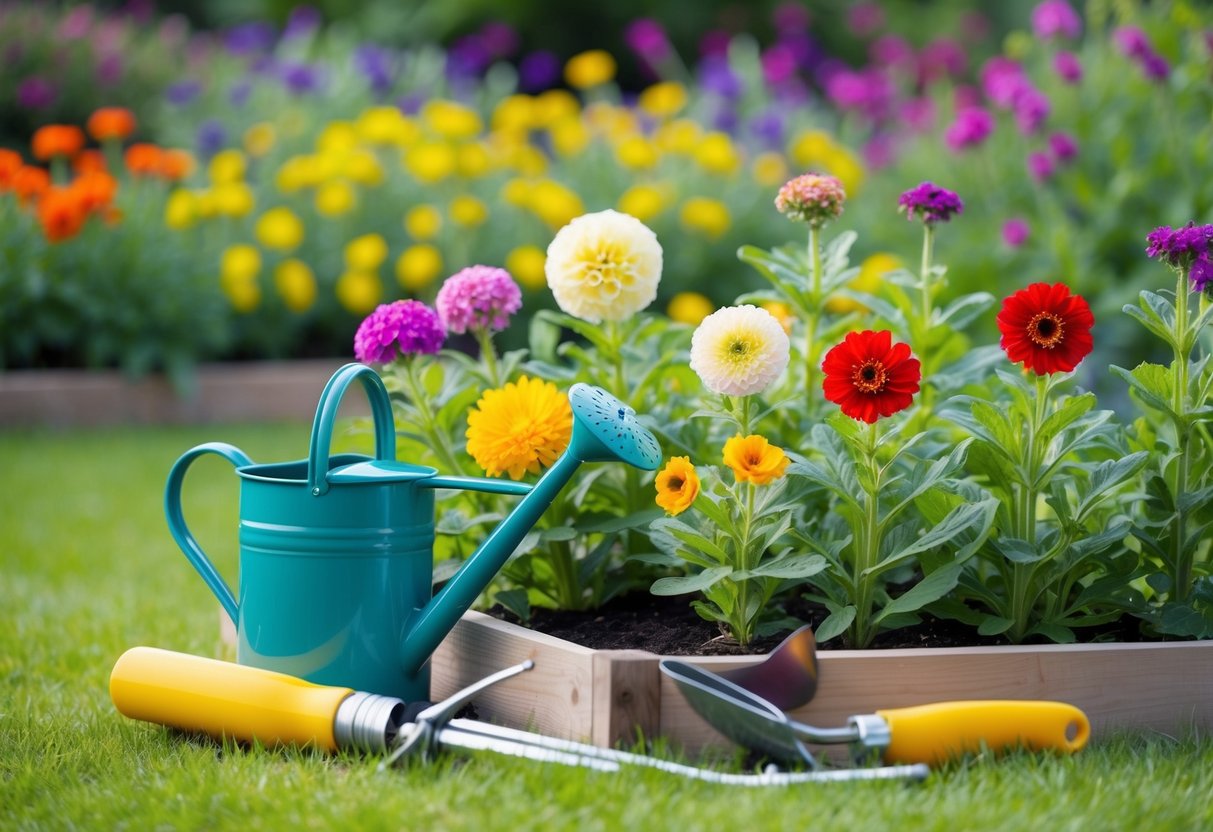
Half-hardy annuals are a wonderful addition to any garden. They thrive with proper planting techniques and consistent care. These plants enjoy well-drained soil and need protection from frost. Careful attention to watering and feeding will help them flourish.
Planting Tips for Half-Hardy Annuals
When planting half-hardy annuals, you should begin indoors a few weeks before the last frost date. Use modular trays filled with compost to start seeds. Maintain a warm environment with good drainage in the trays.
Once frost danger has passed in early summer, transplant seedlings outdoors. Choose locations with well-drained soil.
Dig holes slightly larger than the root ball and place each plant gently. Space them adequately to ensure good air circulation and healthy growth.
Watering and Feeding
Half-hardy annuals require consistent watering, especially during dry spells. Water them early in the morning or late in the afternoon to prevent evaporation. Avoid overwatering; the soil should feel moist but not soggy.
Feeding is essential for lush growth and vibrant blooms. Use a balanced liquid fertilizer every few weeks during the growing season. This helps provide the nutrients your plants need. Keep an eye on weather changes; adjust watering and feeding routines as needed.
Selection of Half-Hardy Annuals
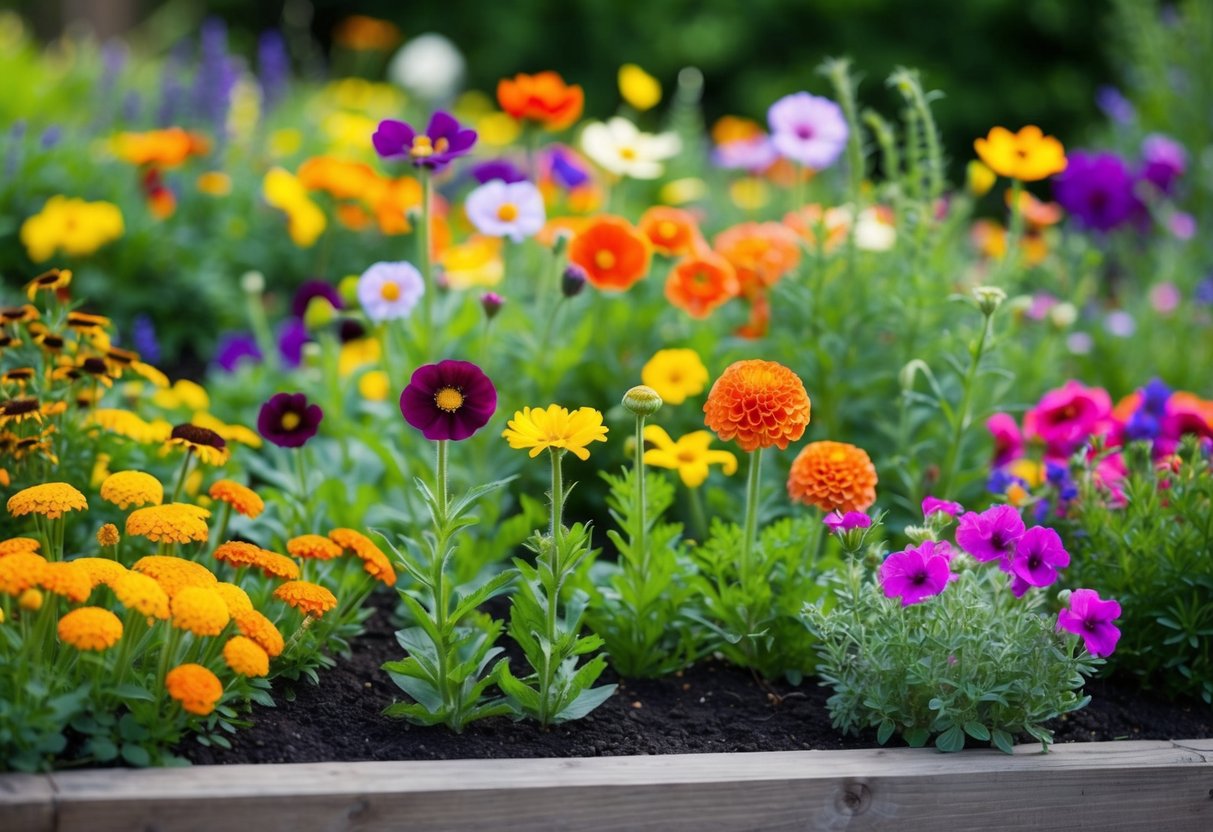
When selecting half-hardy annuals for your garden, it’s important to consider varieties that bring vibrant color and resilience. You’ll find diverse options, each with unique blooms and growing conditions.
Popular Varieties and Cultivars
Zinnias are a favorite among gardeners due to their bright, long-lasting flowers. These are easy to grow and provide a burst of color. Marigolds, especially French marigolds, are reliable and deter garden pests naturally.
Cosmos are another option with their airy foliage and daisy-like flowers. They thrive in almost any soil type and bloom all summer. Petunias offer a wide range of colors and are perfect for containers.
Nasturtiums, with their peppery scent and edible flowers, are perfect for adding color and flavor. Snapdragons add vertical interest with their tall spikes of blooms, and bachelor’s button adds charm with its unique textures and blue flowers.
Choosing the Right Plants for Your Garden
When deciding, consider your garden’s conditions. For sunny spots, zinnias and petunias flourish due to their sun-loving nature. If you’re looking for a fragrant touch, nasturtiums and marigolds work well, providing both scent and beauty.
Choose cosmos and snapdragons if you need plants that can fill space with height and volume. If pests are an issue, marigolds can act as a natural repellent, protecting your garden organically.
Think about color palettes and layouts to ensure a visually pleasing garden. Mixing different heights and colors will create an engaging landscape. Ensure your plants match your space, light, and care preferences, so your garden stays vibrant and healthy throughout the growing season.
Creating a Vibrant Display

Bringing life to your garden with half-hardy annuals can be exciting. These plants add bursts of color and texture, and managing their light needs ensures they flourish. Discover how to mix colors and textures while handling sunlight and shade effectively.
Designing with Color and Texture
When designing your garden, focus on combining different colors and textures for a beautiful display. Choose bedding plants with varied foliage, like bright reds, deep purples, and soft pinks. Mixing flowers like cosmos with their delicate blooms can elevate your garden’s visual appeal.
Texture is just as important as color. Pair smooth leaves with feathery ones to create contrast. Plants with hairy leaves or bell-shaped flowers can add interest and depth. Think about how the colors blend together and select plants that complement each other.
Grouping similar colors in clusters can enhance the visual impact. For a striking effect, plant taller varieties at the back and shorter ones at the front. This layering technique helps each plant to stand out, turning your garden or patio into a lively and dynamic space.
Sunlight and Shade Management
Half-hardy annuals have specific sunlight needs. Most thrive in full sun, needing about six hours of sunshine daily. Before planting, check which areas of your garden receive the most sunlight.
It’s crucial to place sun-loving plants where they can bask in the morning or afternoon light.
For areas with more shade, choose plants that tolerate less sunlight. Some flowers can adapt to dappled shade, keeping your garden vibrant even in less sunny spots. Properly managing shade ensures that each plant receives enough light to grow strong and healthy.
Consider your garden’s layout when positioning plants. If planting on a patio, observe when the sun hits the space. This helps in placing shade-tolerant plants where needed. Creating a balance of sunlight and shade keeps your garden lush and thriving all season long.
Propagation and Aftercare
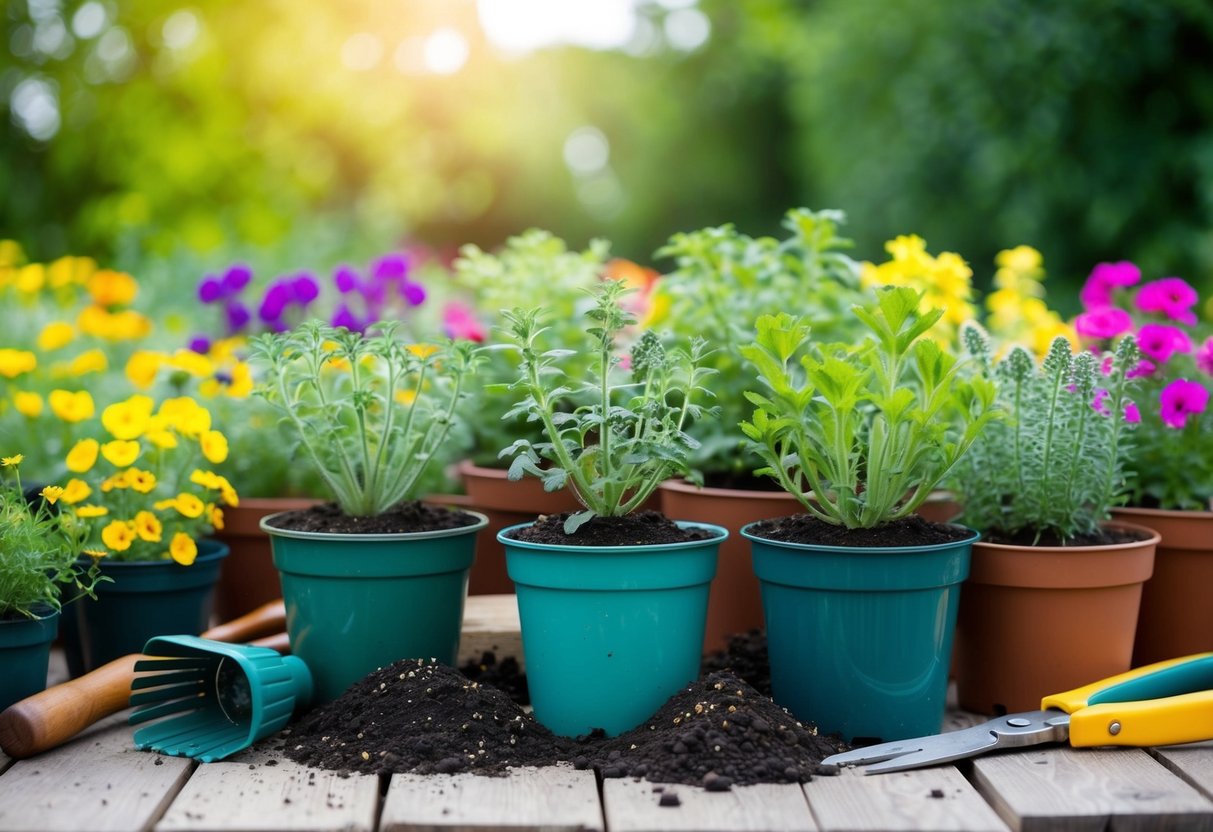
When growing half-hardy annuals, getting a head start and giving proper care later are crucial. Seeds are often started indoors for best results. Once the seedlings grow strong, they transition outside. If you have a greenhouse or a propagator, these tools will be particularly handy.
Starting from Seed Indoors
Begin by sowing seeds in seed trays filled with quality compost. Keep the trays in a warm spot like a greenhouse or use a propagator. Ideal temperatures range from 18-22°C (64-72°F).
Place a tiny pinch of seeds in each cell and cover them lightly with vermiculite. Moisture is vital. Water gently so you don’t disturb the soil or seeds.
Germination takes several days to weeks, depending on the plant type. Thinning may be necessary to allow space for seedlings to flourish.
Use labels to remember what you’ve planted. In a few weeks, tiny sprouts will emerge, indicating healthy growth.
For those without greenhouses, placing trays near a sunny window indoors can work too. Consistent warmth and moisture remain key.
Transitioning to the Outdoors
Once seedlings have grown strong, it’s time to transition them outdoors. This usually starts in late spring, around late May.
Begin by placing the trays outside for a few hours each day. This helps the plants adapt to the cooler temperatures and natural light.
Repeated exposure makes seedlings less susceptible to stress. Then, increase the time they spend outside gradually over about two weeks. This process is known as hardening off.
Make sure they don’t dry out by checking moisture levels often.
When no more frost threats loom, plant your half-hardy seedlings in their outdoor spots. Choose a sunny location in your garden.
If winter approaches, you may consider protective mulch in autumn. Regular care ensures vibrant growth through midsummer.







